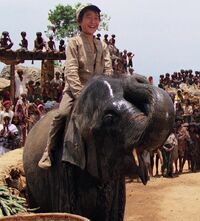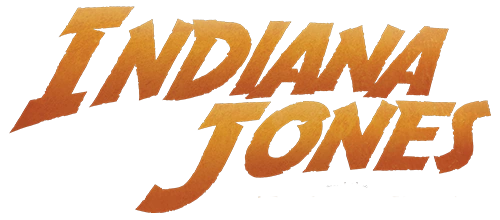No edit summary |
|||
| Line 6: | Line 6: | ||
|habitat(s) = |
|habitat(s) = |
||
|status = |
|status = |
||
| − | }} |
+ | }} ''' |
| − | The |
+ | [[wikipedia:elephant|The elephant]]''' is the largest of the land mammals, and is found in Africa and southern Asia. Though large, elephants are herbivores. Less temperamental than the African species, Asian elephants have been domesticated as mounts and beasts of burden. Additionally, elephant tusks have had economic value for their ivory. Elephants are especially culturally significant in [[India]] and southeast Asia. |
[[Indiana Jones]] had experience of riding elephants. |
[[Indiana Jones]] had experience of riding elephants. |
||
Revision as of 04:57, 29 December 2012
The elephant is the largest of the land mammals, and is found in Africa and southern Asia. Though large, elephants are herbivores. Less temperamental than the African species, Asian elephants have been domesticated as mounts and beasts of burden. Additionally, elephant tusks have had economic value for their ivory. Elephants are especially culturally significant in India and southeast Asia.
Indiana Jones had experience of riding elephants.
Adventures with elephants
In prehistory, elephants were significant in Atlantis: The second circle of Atlantis was a corridor ornamented with ghastly elephant heads.[1]

Short Round riding Big Short Round in 1935.
In 1935 in India, Jones and his two companions, Willie Scott and Short Round travel by elephant from Mayapore to Pankot Palace. While Short Round was friendly towards his smaller mount, which he nicknamed "Big Short Round", Scott was less appreciative of her mount and its odor, pouring perfume on it in a vain effort to mask its scent. Before they reached Pankot, their guides stopped and wouldn't take the elephants any further.[2]. Both Jones and Short Round drew sketches of their mounts in Jones' journal.[3]
The Mayan temple of Tikal investigated by Charles Sternhart had an ornamental elephant head on the wall. Indiana Jones reconstructed the mechanism and opened the tomb in 1939.[4]
Behind the scenes
Indiana Jones and the Fate of Atlantis features elephant statues and effigies in Atlantis and Tikal, an Atlantean place. Indiana and Sternhart realize the paradox, since elephants did not exist in the American continent. In reality, Plato mentioned in his works that elephants were abundant in Atlantis. However a direct connection between elephants and Atlantis is not given in the game, nor their significance to Atlantis is explained.
An elephant features prominently in Indiana Jones and the Staff of Kings. In the Wii/PS2 version Indiana Jones uses an elephant to escape the Sultan's palace in Instanbul after discovering the Shepherd there. In the PSP version he uses one to escape the palace to reach the location of a Shepherd hidden inside of some old Roman Cisterns.
Appearances
- Indiana Jones and the Temple of Doom
- Indiana Jones and the Fate of Atlantis
- Indiana Jones and the Staff of Kings
Sources
- The World of Indiana Jones
- Indiana Jones: The Ultimate Guide
- The Lost Journal of Indiana Jones
- The Indiana Jones Handbook
